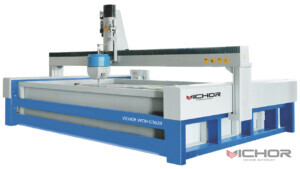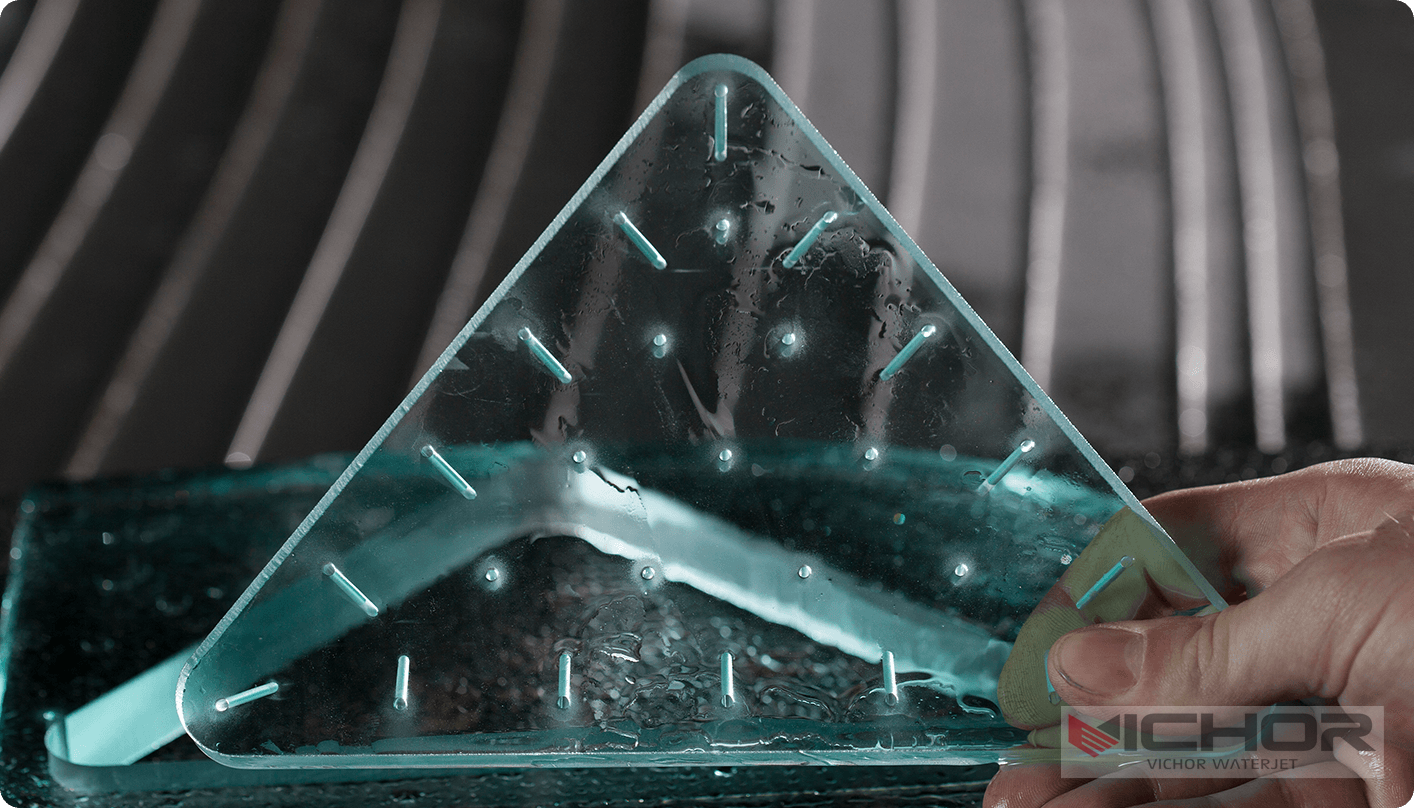
Water Jet and Laser Cutting: Choosing the Right Technology for Your Project
In the world of modern manufacturing and fabrication, precision is paramount. Two technologies stand at the forefront for their ability to cut a vast array of materials with exceptional accuracy: water jet and laser cutting. While both are celebrated for their precision, they operate on fundamentally different principles and excel in distinct applications. For engineers, designers, and fabricators, understanding the nuances between water jet and laser cutting is crucial for selecting the optimal process for any given project. This article delves into the core aspects of these two powerful technologies, comparing their mechanisms, material compatibility, precision, operational costs, and ideal use cases.
The Fundamental Principles: How They Work
At their core, water jet and laser cutting utilize entirely different methods to sever material.
Water jet cutting is a mechanical process. It uses a highly pressurized stream of water, often exceeding 60,000 PSI (4,000 bar), which is focused through a tiny gem orifice (typically made of ruby or diamond) to create a supersonic jet. For cutting harder materials like metals, stone, or ceramics, an abrasive grit (such as garnet) is mixed into this water stream. This abrasive-enhanced jet erodes the material along a predetermined path, effectively sandblasting through it with immense force. It is essentially a controlled, ultra-high-pressure erosion process.
In stark contrast, laser cutting is a thermal process. It employs a highly focused beam of coherent light, generated by a laser source (like CO2 or fiber lasers). This concentrated light energy heats the material at the point of contact to an extreme temperature, causing it to melt, burn, or vaporize. A high-pressure assist gas (such as nitrogen or oxygen) is concurrently blown through the nozzle to eject the molten material from the kerf (the cut width) and, in some cases, to create an exothermic reaction that aids the cutting process. The result is a clean, heat-affected cut.
Material Compatibility: Versatility vs. Specialization
This is perhaps the most significant differentiator between the two technologies. The choice between water jet and laser cutting is often dictated by the material you need to cut.
Water jet cutting is the undisputed champion of material versatility. Because it is a cold-cutting process, it can cut virtually any material without altering its intrinsic structure through heat. This makes it ideal for:
Metals: From soft aluminum and copper to hardened tool steel and titanium.
Stone and Tile: Granite, marble, and glass are easily cut without chipping.
Composites: Materials like carbon fiber and fiberglass are cut without delamination or fraying.
Plastics and Polymers: Acrylic, polycarbonate, and even food products can be cut without melting or releasing harmful fumes.
Laminated Materials: It cleanly cuts through layers without separating them.
Laser cutting excels with a more specific range of materials, primarily metals and thermoplastics. However, its performance depends on the material’s reaction to heat. It is superb for:
Metals: Mild steel, stainless steel, and aluminum are cut with high speed and precision. Reflective metals like copper and brass can be more challenging for some lasers.
Plastics: Acrylic cuts beautifully with a polished edge, and many other plastics are suitable. However, certain plastics like PVC can release hazardous chlorine gas when cut with a laser.
Wood, Fabric, and Paper: Lasers are widely used for engraving and cutting these organic materials.
The key limitation for lasers is materials that are highly reflective, transparent, or susceptible to heat damage, as the process creates a Heat-Affected Zone (HAZ) that can alter material properties.
Precision, Tolerance, and Edge Quality
Both water jet and laser cutting are capable of holding tight tolerances, but they achieve different results.
Water jet cutting typically holds tolerances around ± 0.005 inches (0.13 mm). The edge produced has a matte, satin finish due to the abrasive action. A notable characteristic is a slight taper, where the kerf is wider at the bottom of the cut than at the top. Modern 5-axis cutting heads can tilt to compensate for this, producing a near-perpendicular edge. The cutting process does not induce any stress or thermal distortion in the material.
Laser cutting often holds slightly tighter tolerances, around ± 0.004 inches (0.10 mm) or better, especially on thinner materials. The edge quality is generally very smooth and often has a characteristic striated pattern. On thicker materials, a small HAZ and some dross (re-solidified molten metal) on the bottom edge may be present, which often requires secondary cleaning. The lack of physical force makes lasers ideal for cutting delicate, intricate patterns without any risk of mechanical distortion.

Operational Costs and Production Speed
The economics of water jet and laser cutting are structured differently, influencing the cost-effectiveness of a project.
Water jet cutting has a relatively low initial machine cost compared to high-power lasers. However, its operational costs are ongoing and significant. The primary consumables are the abrasive garnet (which is used in large quantities) and the high-pressure pump components. Water jet is generally a slower process than laser cutting, especially on thicker materials. Therefore, for high-volume production runs on metals under approximately ½ inch thick, the per-part cost can be higher due to slower speed and abrasive consumption.
Laser cutting systems, particularly fiber lasers, have a higher initial capital investment. However, their operational speed is a major advantage. Lasers can cut thin-gauge sheet metal incredibly quickly, making them exceptionally cost-effective for high-volume jobs. Consumables are less frequent and include assist gases and nozzle tips. The primary cost driver is electricity consumption, though modern fiber lasers are highly energy-efficient. For rapid prototyping and mass production of parts within its material sweet spot, laser cutting often provides a lower cost per part.
Applications and Ideal Use Cases
The strengths of each technology naturally lead them to dominate specific industries and applications.
Water jet cutting is the go-to solution for:
Architectural and Artistic Projects: Cutting intricate designs in stone, metal, and glass for buildings and sculptures.
Aerospace and Defense: Cutting heat-sensitive composites (e.g., carbon fiber fuselage components) and high-strength alloys without compromising their integrity.
Food Industry: Cutting frozen goods, cakes, and other products hygienically without cross-contamination.
Heavy Machinery: Cutting thick metal plates (6 inches and beyond) where thermal cutting methods would be impractical.
Laser cutting dominates in:
Sheet Metal Fabrication: Creating parts for enclosures, brackets, and chassis in automotive, electronics, and machinery.
Industrial Manufacturing: High-speed production of components where volume and speed are critical.
Signage and Retail: Precision cutting of acrylic letters, metal logos, and custom displays.
Medical Device Manufacturing: Producing extremely precise and intricate components from medical-grade metals and plastics.
There is no single “best” technology between water jet and laser cutting. Each is a powerful tool with a unique set of capabilities. The choice is not a competition but a strategic decision based on the project’s specific requirements.
Choose water jet cutting when working with a diverse range of materials, especially heat-sensitive ones, very thick sections, or composites where preserving material structure is non-negotiable.
Choose laser cutting for high-speed production on metals and plastics where extreme speed, tight tolerances, and minimal secondary finishing are the primary goals.
By understanding the fundamental differences in their operation, material handling, precision, and cost, manufacturers can leverage the full potential of both water jet and laser cutting to drive innovation, efficiency, and quality in their operations.
continue reading



